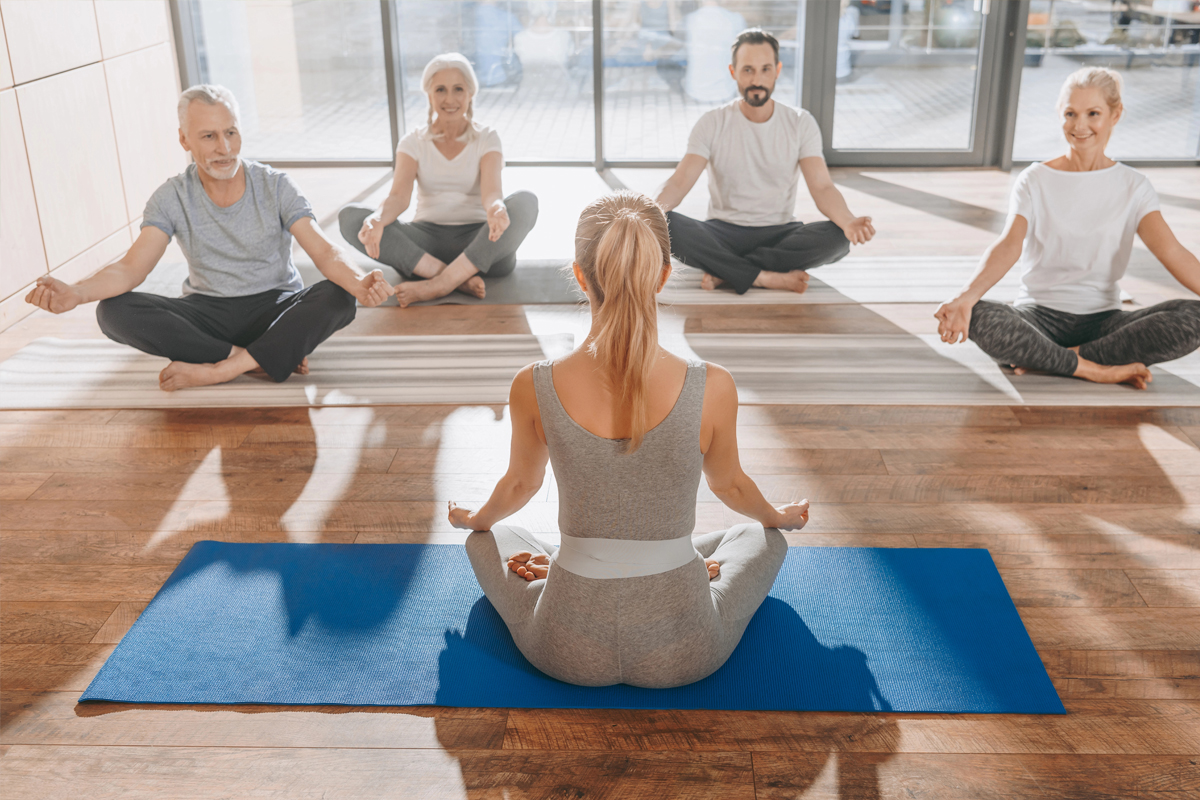Yoga is an ancient practice that helps to strengthen the body, develop flexibility, improve breathing and achieve inner harmony. It is suitable for people of any age and fitness level, and you can start with the simplest exercises that will help you learn the basic elements of yoga. Let’s look at a few exercises that are suitable for those who are just starting to practice yoga.
Why is yoga good for beginners?
Yoga helps to keep you physically fit and promotes psycho-emotional resilience. It relieves stress, improves concentration and allows you to find inner balance. For beginners, it is important to gradually get used to the practice and not to overload at the first stages.
Benefits of yoga for beginners:
- Improving flexibility and coordination;
- Strengthening of muscles and joints;
- Reducing stress and anxiety levels;
- Increased concentration;
- Improved posture and spinal alignment.
You can start your yoga practice with a few simple exercises.
Yoga pose Tadasana (mountain pose)
Tadasana is the basic standing pose that most yoga practices begin with. It teaches proper posture, strengthens leg and back muscles, and improves balance.
How to perform:
- Stand up straight, feet together, arms loosely placed along the body.
- Distribute your weight evenly on both feet. Tighten your knees and tense your glutes.
- Straighten your back, pull your chest up and point your shoulders back and down.
- Keep your neck straight, with the top of your head stretching upwards.
- Stay in this pose for 30 seconds to a minute, concentrating on breathing evenly.
Tadasana helps develop awareness and a sense of the body in space.
Adho Mukha Shvanasana (downward facing dog pose)
This pose is one of the most famous poses in yoga. It helps to stretch the muscles of the back and the back of the legs, strengthens the arms and improves circulation.
How to perform:
- Start on all fours: place your hands under your shoulders and your knees under your hips.
- Lift your hips up, straightening your legs so that your body forms an inverted ‘V’ shape.
- Pull your heels towards the floor, but if you can’t, you can bend your knees slightly.
- The palms of your hands are tightly pressed to the floor, fingers wide apart.
- Keep your head between your hands, neck relaxed.
- Stay in the pose for 30 seconds to a minute, breathing deeply.
Adho Mukha Shvanasana helps to stretch the muscles and improve posture. It is essential for those who sit a lot or suffer from back pain.
Yoga pose Vrikshasana (tree pose)
Tree pose is a great exercise to develop balance and strengthen the legs. It also helps to improve concentration and strengthen the cortical muscles.
How to perform:
- Stand up straight, feet together.
- Bend your right leg at the knee and place your foot on the inside of your left thigh. If it’s difficult, you can place your foot on your shin, but avoid the kneecap.
- Bring your hands together in front of your chest in the ‘prayer position’ (namaste) or raise them above your head.
- Keep your balance by directing your gaze to one point in front of you.
- Stay in this pose for 30 seconds, then repeat on the other leg.
Vrikshasana improves coordination and helps develop stability. For beginners, this exercise is useful in that it teaches attention retention and balance.
Ending the practice: Shavasana (dead man’s pose)
After performing the basic poses, it is important to give your body time to recover and relax. Shavasana is a total relaxation pose that allows the body and mind to rest and absorb the benefits of the practice.
How to perform:
- Lie on your back with your legs and arms stretched out along your body.
- Arms resting loosely on the floor, palms up, feet slightly apart.
- Close your eyes and focus on your breathing. Try to relax all the muscles in your body, starting with your legs and ending with your face.
- Stay in shavasana for 5-10 minutes, breathing deeply and calmly.
This pose helps to reduce tension in the body and calm the nervous system.
Regular yoga practice will help you improve your physical condition and find inner peace and harmony. Starting with simple poses, you can gradually deepen the practice and move to more complex asanas. The main thing is to be patient, listen to your body and enjoy the process.


